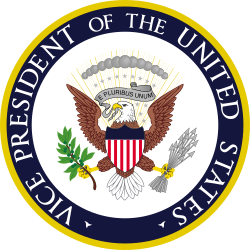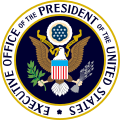History
The vice president has three constitutional functions: to replace the president in the event of death, disability or resignation; to count the votes of electors for president and vice president and declare the winners before a joint session of Congress; and to preside over the Senate (with the role of breaking ties). According to Roger Sherman, a Connecticut congressional cabinet member and Founding Father, if the vice-president did not maintain the role of president of the Senate, then another member would have to occupy the neutral position and thus would make the Senate disproportionate. [3] Vice president had few official duties in the executive branch, and were thus considered part of the legislative branch for purposes of salary. Salary for staff of the Office of the Vice President continues to be funded through both legislative and executive branch appropriations.
For the first century and half of its history, the vice president had no staff other than a secretary and a personal assistant or two. This began to change with the 1939 Reorganization Act, which included an "Office of the Vice President" (who at the time was John Nance Garner), under the Executive Office of the President.
Vice President Henry Wallace was given actual executive duties during World War II, as was Alben Barkley, who became a member of the National Security Council in 1949.
The Office of the Vice President has been located in the Eisenhower Executive Office Building since the 1950s. The room in the EEOB was redesigned and included emblems of the Navy Department, coinciding with the office's original purpose, the process was spearheaded by a Boston interior designer, William McPherson. [4] The vice president individually has also been provided an office in the West Wing since 1977. Much of the Office of the Vice President centers around the offices once provided to the secretary of the Navy when the Eisenhower building was first constructed.
This page is based on this
Wikipedia article Text is available under the
CC BY-SA 4.0 license; additional terms may apply.
Images, videos and audio are available under their respective licenses.

